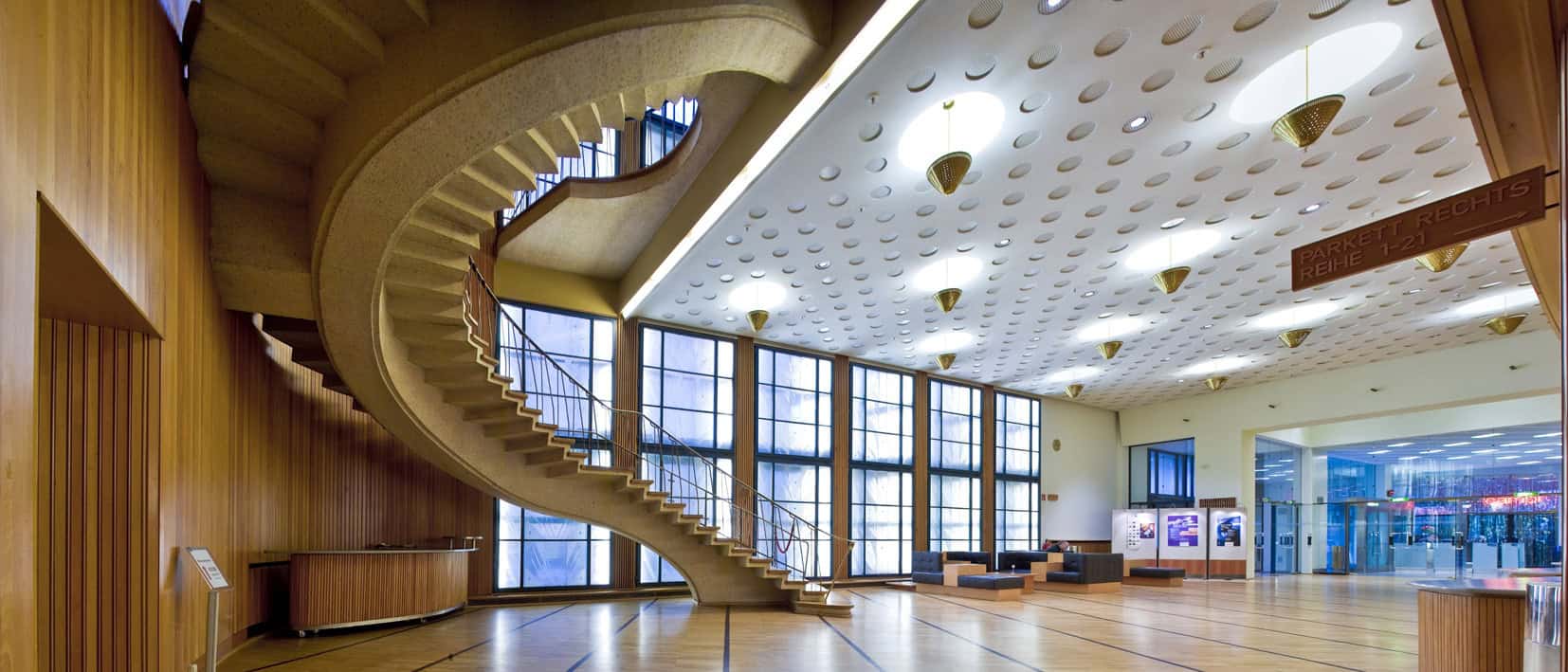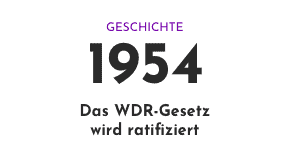The broadcasting house Wallrafplatz was built in 1948 - Cologne was still in ruins at that time - on the initiative of the director Hanns Hartmann according to designs by the architect Peter Friedrich Schneider on the rubble of the Monopol Hotel. In August 1950, the Great Broadcast Hall was inaugurated and celebrated as an acoustic sensation. The broadcasting house was considered one of the most modern in Europe and was placed under monument protection in 1996. To this day, it has been expanded and modernized, but always with the aim of preserving the elegantly curved lightness of its architecture. The Great Hall, which accommodates 650 concert visitors, is one of the most significant music venues in Cologne after the Gürzenich.
In both broadcast halls, the entire musical spectrum can be recorded and transmitted in the highest quality, whether for radio and television recordings or for CD productions. The Great Broadcast Hall, which is now named after the former director of the WDR Klaus von Bismarck Hall, hosts more than 60 concerts a year. The Small Broadcast Hall, which accommodates 160 seats, is also fully booked throughout the year for concerts and radio broadcasts. In addition to the two concert halls, the broadcasting house also houses the editorial offices of a large part of WDR radio, state-of-the-art digital production studios for spoken word and music programs, parts of the sound archive, radio technology, and the broadcasting center. Approximately 70,000 visitors are guided through the broadcasting house each year to see the interior design, the broadcast halls, and the windows by the sculptor Ludwig Gies and the painter Georg Meistermann.




